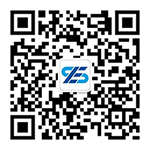With over 200 dedicated professionals, Beijing East IP has helped a full spectrum of clients – from startups to Fortune 500 corporations to domestic multinational companies – on their intellectual property issues in China.
Weekly China Brand Protection News – September 24, 2024

Weekly China Brand Protection News
September 24, 2024
Schneider Electric won a CNY 106 million compensation in a trademark infringement and unfair competition lawsuit
Recently, the Supreme People’s Court concluded the second instance of the dispute between Schneider Electric (China) Co., Ltd. and Zhenjiang Shinaide Electric Co., Ltd. (“Zhenjiang Shinaide”), Shinaide Busbar Jiangsu Co., Ltd. (“Shinaide Busbar”), and others regarding trademark infringement and unfair competition, upholding the Zhejiang High Court’s first-instance judgment.
The main issues of the dispute are whether Schneider’s lawsuit exceeded the maximum statute of limitations, whether Zhenjiang Shinaide and others were liable for trademark infringement and unfair competition, and the calculation of the compensation amount. The Supreme Court found as follows:
1. Statute of Limitations
Zhenjiang Shinaide argued that their company was established in 1999, and since Schneider filed its lawsuit in 2020, more than 20 years had passed. Therefore, under the Civil Code’s 20-year maximum statute of limitations, Schneider’s rights should not be protected. However, the court held that while Zhenjiang Shinaide was established in 1999, the company has existed until now without changing its name. The alleged infringement continued up to the point when Schneider filed its lawsuit. Moreover, Zhenjiang Shinaide’s registration and use of its company name do not cover the alleged trademark infringement activities. Therefore, Schneider’s lawsuit was not beyond the maximum statute of limitations. The court rejected Zhenjiang Shinaide’s defense.
2. Trademark Infringement and Unfair Competition
Regarding the alleged infringement involving Zhenjiang Shinaide and others using the “![]() ” and “
” and “![]() ” marks on product labels, product manuals displayed on their 1688 online store, and the website www.zj-schneider.com, the court found that the accused “Schneider” mark was prominently used on the products, as well as the online store and website, serving to identify the source of the goods. This qualifies as trademark use. The goods in question were either identical or similar to those covered by Schneider’s trademarks. These trademarks had received well-known mark protection multiple times and have significant fame and influence. The use of a combination of other Chinese with “Schneider in Chinese (shinaide)” in “Zhenjiang Shinaide Electric” and “Shinaide Busbar” was likely to cause confusion among the relevant public.
” marks on product labels, product manuals displayed on their 1688 online store, and the website www.zj-schneider.com, the court found that the accused “Schneider” mark was prominently used on the products, as well as the online store and website, serving to identify the source of the goods. This qualifies as trademark use. The goods in question were either identical or similar to those covered by Schneider’s trademarks. These trademarks had received well-known mark protection multiple times and have significant fame and influence. The use of a combination of other Chinese with “Schneider in Chinese (shinaide)” in “Zhenjiang Shinaide Electric” and “Shinaide Busbar” was likely to cause confusion among the relevant public.
Regarding the alleged infringement involving Zhenjiang Shinaide using marks such as “Schneider in Chinese,” “Zhenjiang Shinaide in Chinese,” “Zhenjiang Shinaide Electric in Chinese,” “Shinaide Electric in Chinese,” “Zhenjiang Shinaide Busbar in Chinese,” and “Shinaide Busbar in Chinese” on product labels, certificates, websites like www.zj-schneider.com and suoude.net, WeChat public accounts, WeChat mini-programs, and their 1688 online store, Zhenjiang Shinaide argued that these were lawful uses of its corporate name and did not constitute infringement. The court, however, found that Zhenjiang Shinaide and Shinaide Busbar had not been using their full company names properly but had instead prominently used the accused marks on their products, certificates, websites, and online store. Specifically, the 1688 store clearly listed “Zhenjiang Shinaide in Chinese” in the “brand” section, serving to identify the goods’ source, thus constituting trademark use. The goods in question were similar or identical to those covered by Schneider’s trademark. As the primary identifying feature was “Shinaide in Chinese,” which closely resembled Schneider’s trademarks, it was likely to cause confusion among the public.
Regarding the alleged infringement where Zhenjiang Shinaide registered “zj-schneider.com” as a domain name and conducted e-commerce transactions through it, the court ruled that the core part of the domain name, “schneider,” was identical to the key part of Schneider’s registered trademark (international registration no. 715396). Schneider’s trademark was well-known and distinctive, and Zhenjiang Schinaide’s registration of a similar domain name was likely to cause public confusion. Moreover, since the website provided detailed product catalogs and introductions, along with sections for “feedback” and “contact information,” the court concluded that it was used for e-commerce transactions. Based on these reasons, the court held that Zhenjiang Shinaide’s registration and use of the “zj-schneider.com” domain name infringed the exclusive rights of Schneider’s “![]() ” trademark (with reg. no. G715396).
” trademark (with reg. no. G715396).
Additionally, Zhenjiang Shinaide and Shinaide Busbar’s use of “Shinaide in Chinese” as part of their company names also constituted unfair competition.
3. Calculation of Compensation Amount
Regarding the determination of the compensation period, Schneider claimed compensation for the profits gained from the infringement by Zhenjiang Shinaide and Shinaide Busbar from 2010 to March 2022. The defendants argued that Schneider had long been aware of Zhenjiang Shinaide’s activities but waited until now to sue, exceeding the three-year statute of limitations. The court found that evidence submitted by Schneider showed that by 2016, they were aware of the alleged infringement by Zhenjiang Shinaide and Shinaide Busbar. Since Schneider knew about the infringement as early as 2016 but only filed the lawsuit in May 2020, it exceeded the three-year statute of limitations. Therefore, compensation should be calculated retroactively from May 2020 for a period of three years. As for the infringement after Schneider filed the lawsuit, the evidence demonstrated that Zhenjiang Shinaide and Shinaide Busbar continued their infringing actions until March 2022, prior to the court hearing. Schneider’s lawsuit interrupted the statute of limitations, and thus, the claim for the defendant’s post-filing infringement had not exceeded the limitation period. Therefore, compensation should be calculated from June 2017 to March 2022.
Regarding the basis and amount for calculating punitive damages, the financial evidence obtained by Schneider through a court order clearly indicated the annual revenue, costs, and taxes and surcharges of Zhenjiang Schneider. The compensation base can be directly determined from this financial data, where sales profit = revenue – costs – taxes and surcharges.
For determining the multiplier of punitive damages, the court considered the subjective fault and the severity of the infringement by Zhenjiang Shinaide and found it appropriate to support Schneider’s request. The punitive damages multiplier and the base amount should be calculated separately. Thus, the final compensation to be borne by the defendants would be the sum of the base compensation amount and the punitive damages. The court decided to apply a multiplier of 2 for calculating the punitive damages.
| Follow us on LinkedIn! Email: trademark@beijingeastip.com Tel: +86 10 8518 9318 | Fax: +86 10 8518 9338 Address: Suite 1601, Tower E2, Oriental Plaza, 1 East Chang An Ave., Dongcheng Dist., Beijing, 100738, P.R. China |
-
ABOUT US
-
PRACTICES
-
NEWS & EVENTS
-
Other Links
-
Contact Us
- info@beijingeastip.com
- +86 10 8518 9318
- +86 10 8518 9338


